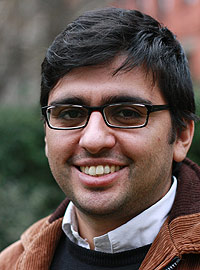Study of the diffusion, rheology and microrheology of complex mixtures of bacteria and particles under flow confined in thin channels

In my thesis, I studied three problems involving E. Coli bacterial suspensions.
Firstly, I focused on the Brownian motion of passive tracers in this particular active suspension close to a surface. Buoyancy and non-buoyancy swimming solutions were tested, revealing a linear increase of the passive tracer diffusion with the "active flux", obtained by the active concentration of bacteria multiplied by the mean velocity. Boundary confinements were also explored in buoyancy conditions, showing a better momentum transfer of the active bacteria as the height of the confinement gets smaller. The use of artificial swimmers instead of bacteria also leads to similar results in the enhancement of the diffusion.
Secondly, I considered the modification of the fluid viscosity caused by the presence of these self-propelling entities. It is known that for pusher swimmers as bacteria the viscosity can even be smaller than that of the suspending fluid viscosity. The lack of experimental result showing this effect in the bulk inspired us to build a Y shape micro-fluidic channel in order to study the rheology of wild type E-Coli suspension. Preliminary results show a non-Newtonian behaviour of active solution with a decrease of the liquid viscosity at low volume fractions and low shear rates.
Thirdly, I proposed to address the question of dispersion and transport of E.Coli suspensions flowing in a micro-channel with a constriction. Here, in a confined environment the interactions with the boundaries and the geometry of the channels play an essential role. Surprisingly, my results show that the flow in a channel can produce a re-concentration of bacteria after passing through the constriction and this can be controlled by the flow.







